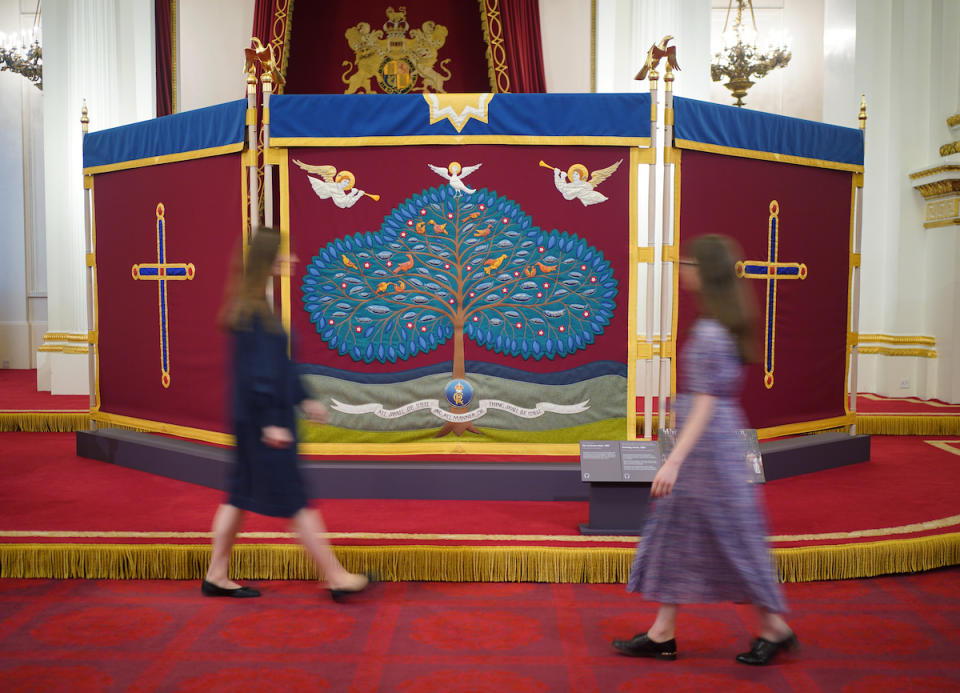Kate Middleton Tours UK Textile Mill with Family Ties
- Oops!Something went wrong.Please try again later.
- Oops!Something went wrong.Please try again later.
- Oops!Something went wrong.Please try again later.

Kate Middleton visited textile manufacturers this week as part of the royal family’s effort to promote the British textile industry.
The Princess of Wales has a special connection to the first stop on her whirlwind tour, the family-owned heritage AW Hainsworth mill in Stanningley, Yorkshire. In 1958, her great-great-grandfather, Noel Middleton, sold his family firm, William Lupton & Co., to AW Hainsworth. The vertically integrated textile mill was granted a “royal warrant” from the late Queen Elizabeth II, meaning it supplies the royal family.
More from Sourcing Journal
UK Waste Management Firm Invests in End-to-End Recycling Complex
Responsibility and Risk Reduction were Key Themes at Source Fashion
Government Officials Urge Shutdown Textile Mills Back to Work After Exports Fall 28%
But AW Hainsworth also produces for brands including Chanel and Burberry, and supplies fabric for the famous red-coat guardsman uniforms seen outside Buckingham Palace.
“She was very interested in the process, and I talked her through how we made the cloth for the Guards on the Somet loom,” senior weaver Zeb Akhtar told the Daily Mail.
Princess Kate also visited Standfast & Barracks, a fabric printworks company in Lancaster in business since 1924, where she met apprentices in training as part of the textile firm’s commitment to education and skills development. Part of the Sanderson Design Group, the company creates 21 miles of printed fabrics weekly using “ground-breaking” digital ink jet technology along with conventional textile printing methods.
During the visit, the Duchess of Cambridge also was introduced to the owners of interior design expert House of Hackney, a partner to Standfast & Barracks since its founding in 2011, and a collaborator with Anthropologie on upscale home furnishings.
Princess Kate’s textile tour day is part of a larger initiative promoting the British textile sector. It gave the Princess of Wales the opportunity to discover the industry’s heritage, sustainable practices and work educating and upskilling young people—efforts the royal family has long championed, according to the UK Fashion and Textile Association (UKFT).
King Charles III’s coronation in May, for example, showcased the nation’s textile prowess. The Coronation Anointing Screen seen by millions during the televised ceremony was the “fruit of a unique collaboration of UK textile manufacturers,” the UKFT said. It was woven, spun and dyed by companies including AW Hainsworth, Camira Fabrics, John Spencer Textiles and more. Before he was crowned, the British head of state famously donated 3,000 nettle plants from his own property to help designers create sustainable fashion.

Other royals are supporting the textile sector, too.
During Climate Week earlier this month, Prince William announced the finalists for the 2023 Earthshot Prize, an initiative he launched in 2020 to scale environmental solutions. Two textile organizations were among the 15 finalists: Circ Inc., whose innovation enables the recycling of polycotton fabric blends, and Colorifix, which makes sustainable dyestuffs via DNA sequencing.
Meghan Markle is famous for helping fashion products sell out when she wears them. The trend-setting Duchess of Sussex has also thrust eco-friendlier brands into the consumer spotlight, such as Mother Denim, along with shoe makers Veja and Rothy’s.
The UK textile market might be benefitting from the royal treatment. The fashion and textile industry contributes almost $24.3 billion to the national economy, according to UKFT. Last month, the sector received a 6 million pound ($7 million) investment from UK Research and Innovation (UKRI) to encourage sustainable practices in an industry that supports half a million jobs.
“The fashion industry makes a significant contribution to the UK,” Peter Liss, interim executive chair of the Natural Environment Research Council (NERC), a part of UKRI, said at the time. “But it also impacts the environment, including water resources and causing emissions of greenhouse gases. We need to better understand the true impact. This investment will bring together industry experts and researchers in environmental science and fashion to embed sustainability in the fashion and textile industry.”
Jessica Binns contributed to this report.

